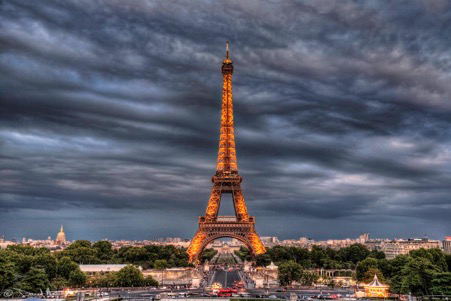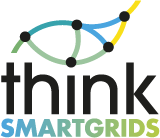The Grand Paris metropolis came into being on 1 January 2016: 131 communes and a population of over 6.7 million. In the months ahead the executive leadership that was elected on 22 January and 209 metropolitan councillors will kickstart the implementation of a nationwide air-energy climate plan. They will also take on the streamlining of distribution networks: electricity, gas, heat and cold. Smart Grid technologies will feature prominently in this endeavour.

Image caption: The Eiffel Tower seen from the Trocadero – Photo: David Harmantas on Flickr CC
In 2012, a seminar organized by the Ile de France Prefecture warned that: “16 000 MW of electrical power is required by the inhabitants of the Ile de France area annually. By 2030, these needs will have increased by 25%”. These additional 4,000 MW are mainly due to the Grand Paris Express and its 72 stations, to the construction of 800,000 new offices and housing developments, to the development of data centres, and the arrival of electric vehicles, including 10,000 buses, skips and garbage trucks, which account for 500 MW. “Hence, producers will need to guarantee these additional 4,000 megawatts continuously, bearing in mind that the demand for power during peak hours in winter reaches 13,000 MW.” This additional demand is the maximum power that can be supplied in 2.5 tranches from a nuclear plant such Flamanville (1,800 MW), 13 gas plants (300 MW) or 2000 wind turbines of 2 MW.
According to ERDF, “it will be necessary to expand and strengthen the power grid but also to upgrade it with additional intelligence capacity and and greater efficiency. Intermittent production will appear with renewable energies that will need to be stored in batteries. The network will need to have the intelligence to select between produced and stored electricity.”
Energy loop and Grid as part of the transport Grand Paris Express network
The Société du Grand Paris (Grand Paris Ltd), the public entity charged with designing and building the Grand Paris Express transport network, is working on the construction of a local energy loop to exploit geothermal energy and thermal loss at stations. In October 2013, the company signed an agreement with the Efficacity institute to study the geothermal potential of five station districts and connecting the recovered energy with the needs of the neighbourhood. Besides the use of geothermal energy and moulded thermoactive walls, this strategy involves the implementation of a Smart Grid, able to adapt to the supply and demand of energy in real time.
Live Grid
The Paris-Saclay campus, which counts 80,000 teachers, students and researchers, plans the development of a multi-energy Smart Grid in framework of the LiveGrid project. At present, three major sub-projects are being developed: a microgrid project, an intelligent buildings project and a project to simulate the behaviour of a Smart Grid. Various technical solutions are being studied including an intelligent hot-and-cold network using deep geothermal energy and the intelligent networking of two buildings with different characteristics, one modern and well insulated, the other older with high heat loss.
Data City: a Smart City laboratory
The City of Paris, for its part, plans to transform the capital into a testing ground for new urban solutions. In association with the Numa startup incubator and several industrial partners (Vinci Energies, Setec, Suez Consulting, Nexity and Cisco), in early January the city launched Data City, an open innovation program organized around nine challenges. These include “the pooling of energy flows to design positive energy hubs with a minimal carbon footprint” and “behaviour change in energy consumption.” Five projects will be selected in late February for the first edition of the program. They will be tested in real conditions at the Stade de France, the Place de la Nation or in district councils.
IssyGrid
In 2011, Issy les Moulineaux launched a smart district energy grid. IssyGrid today connects more than a hundred homes, three commercial buildings, a dozen electric vehicles and smart streetlights two neighbourhood streets. The Issy Grid project brings together eight industrial partners (Bouygues Immobilier, Bouygues Telecom, GE Grid Solutions, ERDF, EDF, Microsoft, Schneider Electric, Total) and several startups, including Embix, Ijenko and Navidis.
Four winners of the “industrial demonstrators for a sustainable city” call for projects
In October 2015 the Ministries of Ecology and Urban Planning launched a call for projects entitled “industrial demonstrators for the sustainable city”. This call for projects extended several programmes which aim to “test new methods of design and management of urban projects “, the “City of Tomorrow” and “sustainable and inclusive city” programmes (as part of the long-term investments), the “eco-district” and “eco-cities” labels, the “integrated nationwide projects” and “regions committed to positive energy for green growth” (TEPCV).
Among the 11 winners of the “Industrial Demonstrators for the sustainable city,” call for projects four are based in the Ile de France region: The Paris Saclay industrial demonstrator, the “Dream of urban landscape” project in Plaine Commune, the ” Relais des possibles” project at Fontainebleau-Avon, and the Lifi project (Light Fidelity) in Palaiseau.
ITEMS International for Think Smartgrids



